The costs of maintaining an oil-based transportation system are enormous, and there are many ways in which we continue to pay that burden. Terrorists give many reasons for their attacks against us, but without oil money flowing to the Middle East, carrying out any attack would be difficult, if not impossible. There is a reason the United States bombs oil convoys belonging to ISIS: it interferes with their flow of money.
Over 6,000 lives have been lost in the Middle East over the past few decades. We also need to note the high price that our service men and women pay so that oil can flow.
Here is a short list of some of the more high-profile wars, conflicts, and terrorist incidents that have occurred around the world over the last 40 years, followed by some narrative about each.
It is difficult to address complex situations in discrete accounts, but I have described each event simply, understanding it is the larger narrative that is important.
- The takeover of the American Embassy, Tehran, Iran, 1979
- The bombing of the American Embassy, Beirut, Lebanon, 1983
- The bombing of the US Marine Barracks and French Barracks, Beirut, Lebanon, 1983
- The Persian Gulf War of 1990–91
- The World Trade Center bombing, New York City, 1993
- The bombing of the Saudi military installation, Riyadh, 1995
- The bombing of Khobar Towers, Dhahran, Saudi Arabia 1996
- The East African embassy bombings, 1998
- The bombing of the U.S.S. Cole, Aden, Yemen, 2000
- 9/11
- The Global War on Terrorism and Overseas Contingency Operations
- European attacks
The Takeover of the American Embassy, Tehran, Iran, 1979
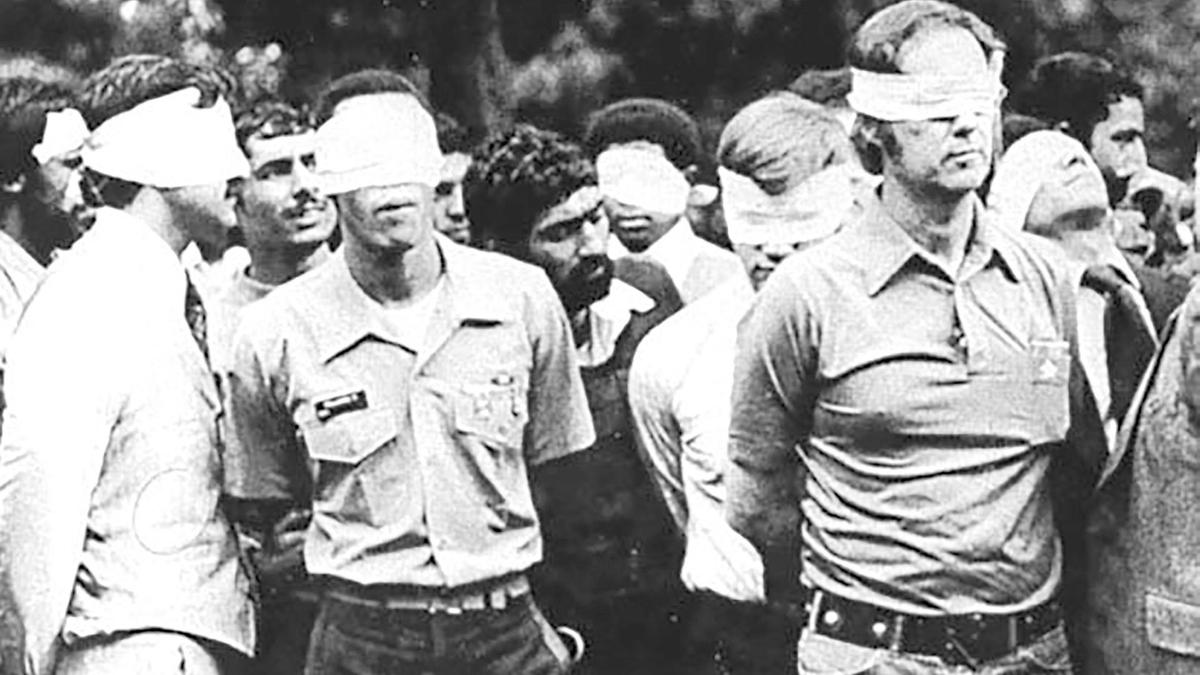
The United States and its allies’ original and primary interest in Iran was for its oil. There is no question about this. Much of the account below is from a PBS article.
On November 4, 1979, an angry mob of young Islamic revolutionaries overran the U.S. Embassy in Tehran, taking more than 60 Americans hostage. “From the moment the hostages were seized until they were released minutes after Ronald Reagan took the oath of office as president 444 days later,” wrote historian Gaddis Smith, “the crisis absorbed more concentrated effort by American officials and had more extensive coverage on television and in the press than any other event since World War II.”
Ever since oil was discovered there in 1908, Iran had attracted great interest from the West. The British played a dominant role there until World War II, when the Soviet Union joined them in fighting to keep the Germans out. Until 1953, the United States mostly stayed on the sidelines, advocating for an independent Iran under the leadership of the young king, Reza Shah Pahlavi. But that year, fearing that charismatic prime minister Mohammed Mossadegh might be moving Iran closer to Moscow, the CIA directed an operation to oust him and consolidate power under the Shah.
With a steady flow of oil from the ground and military equipment from the U.S., the Shah led Iran into a period of unprecedented prosperity. But growing resentment against an uneven distribution of wealth and the westernizing influence of the United States led to a confrontation with Islamic clergy in 1963. The Shah effectively put down the uprising, sending its leader, an elderly cleric named Ruhollah Khomeini, into exile in Iraq. Though no one knew it at the time, Iran’s Islamic revolution had begun.
Over the next few years, a mounting uprising grew strength.
The United States support of the Shah was counterproductive and on January 16, 1979, the Shah fled to Egypt. Two weeks later, thousands of Muslims cheered Khomeini’s return to Iran after fourteen years in exile.
When students overran the embassy and seized more than sixty Americans on November 4, it was not at all clear whom they represented or what they hoped to achieve. In fact, a similar mob had briefly done the same thing nine months earlier, holding the American ambassador hostage for a few hours before members of Khomeini’s retinue ordered him released. But this time, Khomeini saw a chance to consolidate his power around a potent symbol and issued a statement in support of the action against the American “den of spies.” The students vowed not to release the Americans until the U.S. returned the Shah for trial, along with billions of dollars they claimed he had stolen from the Iranian people.
President Carter initially decided that military action was too risky and he tried to build pressure on Iran through economic sanctions and froze its assets in the United States. Diplomats worked furiously through back channels to no avail.
Finally, with the Iranians showing no signs of releasing the hostages, Carter decided on a different course. On April 11, 1980, he approved a high-risk rescue operation, called “Desert One,” that had been in the works for months. Though the odds were against its success, the president was devastated when he had to abort the mission due to three malfunctioning helicopters. When another helicopter crashed into a C-130 transport plane while taking off, eight servicemen were killed and three more were injured. The next morning, gleeful Iranians broadcast footage of the smoking remains of the rescue attempt, a stark symbol of American impotence.
Finally, in September, Khomeini’s government decided it was time to end the matter. There was little more advantage to be gained from further anti-American, anti-Shah propaganda, and the ongoing sanctions were making it harder to straighten out an already chaotic economy. Despite rumors that Carter might pull out an “October Surprise” and get the hostages home before the election, negotiations dragged on for months, even after Republican Ronald Reagan’s landslide victory in November. Carter’s all-night effort to bring the remaining 52 hostages home before the end of his term fell short. The Iranians released them minutes after Reagan was inaugurated.
The Bombing of the American Embassy, Beirut, Lebanon, 1983
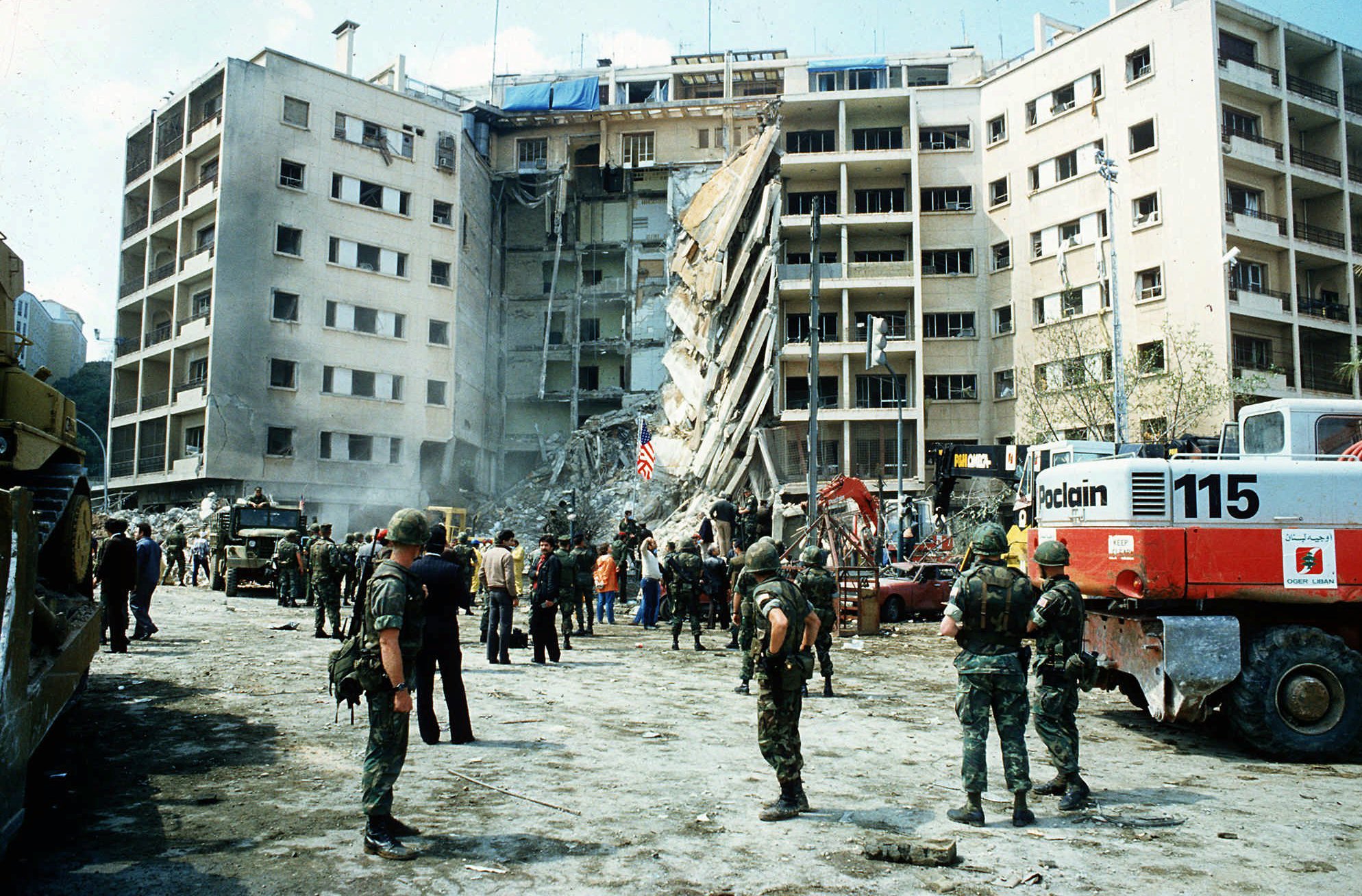
In an attempt to maintain stability in the Middle East, the United States and other Western countries intervened in the Lebanese Civil War. President Reagan sent Marines to Lebanon in 1982 as part of that multinational peacekeeping mission. Their presence was not welcomed by Islamists.
The April 18, 1983, Beirut embassy attack was a dramatic, violent step up from just holding hostages in Tehran in 1979. It was a suicide bombing that killed 63 people, including 17 Americans. The van carrying the bomb is thought to have been bought in Texas and shipped to the Middle East. It gained access to the embassy compound and parked at the very front of the building, where it exploded. The victims were mostly embassy and CIA staff members but included several U.S. soldiers and one U.S. Marine Security Guard.
A pro-Iranian group took responsibility for the bombing. However, Judge Royce Lamberth of the U.S. District Court in Washington, D.C. on May 30, 2003, determined that the bombing was carried out by the militant group Hezbollah with the approval and financing of senior Iranian officials. Hezbollah is an Islamist militant group based in Lebanon that was originally organized and trained by Iran.
The April 1983 bombing was only one of the now more common suicide attacks in the region. Other suicide car bombings over the next eight months included one against the US and French embassies in Kuwait. However, an attack that shocked the world was just a few months away.
Less Oil = Less Human Cost
The Bombing of the US Marine Barracks and the French Barracks, Beirut, Lebanon, 1983
After the bombing at the US Embassy in April, the security situation in Lebanon continued to deteriorate, as the multinational peacekeeping force that included units from France, Italy, and the United Kingdom took constant attacks. the US positions at the Beirut International Airport were no exception.
Despite the attacks and counterattacks of mortar and rocket fire throughout 1983, the Marines still were under restrictive rules of engagement regarding the use of weapons. (The military is not fond of restrictive rules of engagement, which are usually more political in nature and often fail to match the actual military/security situation). According to after-action reports, on October 23, 1983, the day of the bombing, those on post were allowed a loaded magazine inserted in their weapon, bolt closed, weapon on safe, with no round in the chamber. This means that an immediate response was not possible if a danger suddenly arose. In fact, when the truck carrying the bomb that would cause so much devastation was speeding its way toward the building, only one Marine had chambered a round in his rifle. The truck actually crashed into the lobby of the building housing the Marines.
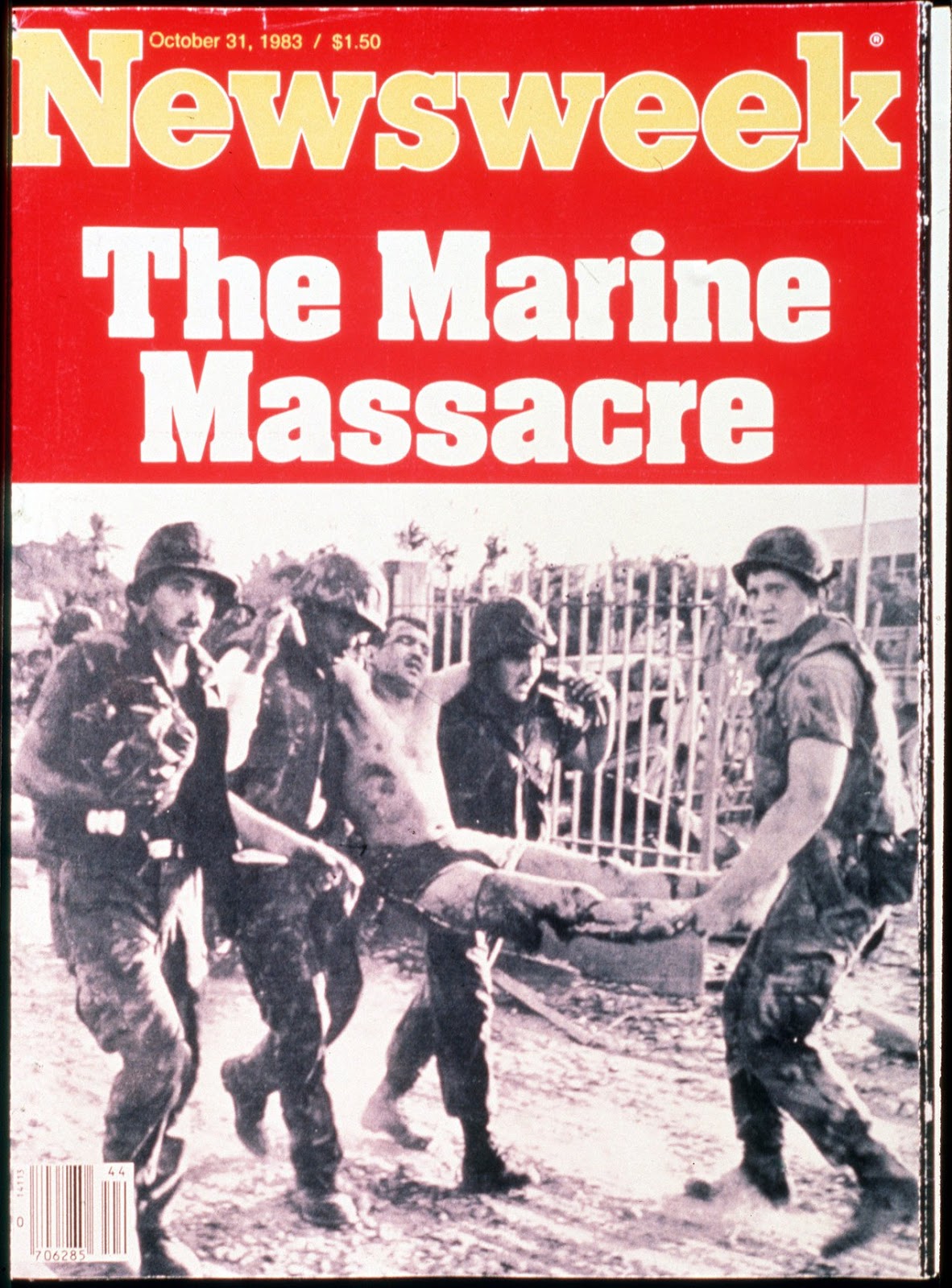
The suicide bomber was an Iranian national. The force of the explosion collapsed the four-story building, killing 241 American servicemen. This was the deadliest attack against US Marines since the battle over Iwo Jima in February 1945.
According to Eric Hammel in his book, The Root: The Marines in Beirut, August 1982-February 1984, “The force of the explosion initially lifted the entire four-story structure, shearing the bases of the concrete support columns, each measuring fifteen feet in circumference and reinforced by numerous one-and-three-quarter-inch steel rods. The airborne building then fell in upon itself. A massive shock wave and ball of flaming gas was hurled in all directions.”
Less than ten minutes later, a similar attack occurred against the French barracks in West Beirut. Although it is believed that the truck did not actually reach the barracks, the explosion still brought down the building, killing 58 French servicemen. It was France’s worst military loss since the end of the Algerian War in 1962.
The United States determined that a group tied to Hezbollah, backed by Iran and Syria, was responsible for these bombings. A group named “Islamic Jihad” claimed credit for the bombings, but most observers believe that was a cover name, since Hezbollah did not announce their existence until 1985. Iran continues to deny involvement in the bombings; however, they did erect a monument in Tehran to commemorate the 1983 bombings.
The Persian Gulf War of 1990-91
Almost all of the other events in this chapter were in some way funded by, or related to, the sale of oil. However, the Gulf War was a massive, definitive statement by the West, defending not only its access to oil but also the necessity of the entire world having access to Middle Eastern oil. This war was about oil. I was there.
Iraq’s Saddam Hussein invaded Kuwait on August 2, 1990. He was fresh from an eight-year war with Iran, but he wanted access to the oil resources in Kuwait to force cancellation of debts owed and to control more of the global oil market. His forces moved quickly through the tiny nation and they consolidated their positions within days.
The reaction around the world was swift. The United States, the Soviet Union, and Great Britain immediately denounced the invasion. On August 3, the United Nations Security Council called for Iraq to withdraw from Kuwait. On August 6, Saudi Arabia requested military assistance from the United States. On August 8, the United States Air Force and NATO troops arrived in Saudi Arabia along with troops from Egypt and other Arab nations. If Hussein was counting on Arab support, he miscalculated badly. Two-thirds of the 21 members of the Arab League condemned the invasion.
Why such quick action? If Iraq could fight Iran for eight years, then invade Kuwait two years later, would Saudi Arabia be next? With the vast oil reserves in Saudi Arabia so necessary to the global economy, combined with the relative stability of the Saudi government, the world could not allow an invasion of that country. The rapid buildup of multinational forces in the northern portions of Saudi Arabia made that very clear.
The economic world order was at stake, and oil was the key.
On November 29, the United Nations Security Council ordered Iraq out of Kuwait by mid-January, but Hussein did not comply. Instead, he eventually increased the Iraqi forces in Kuwait up to 300,000 troops. The coalition forces arrayed against him numbered more than 700,000, including over 500,000 from the United States. The coalition included forces from Saudi Arabia, France, Germany, Britain, Japan, Egypt, Syria (yes, Syria) and others. More than two dozen countries overall. Iraq was aligned with Jordan (oddly), Sudan, Yemen, and a few others, including the Palestine Liberation Organization. The estimate on the number of casualties in the first few days for the coalition forces was around 10,000. Chemical warfare by the Iraqis was being discussed. US forces were taking pills they had never heard of before in anticipation of this kind of warfare. The world was very much on edge.
On January 17, 1991, the coalition started its offensive with a United States-led air attack. The air operation, lasting just over 30 days, had a devastating effect on the Iraqi forces. Before any ground attack, commanders always want to “soften up” the enemy with either air or artillery attacks. In this case, it worked extremely well.
In concert with the air operations, the overall ground plan was changed with General Norman Schwarzkopf’s Left Hook strategy when he ordered the bulk of the armored troops far west while he kept coalition amphibious forces (US Marines) in the Gulf to keep the Iraqis in place along the Saudi/Kuwaiti border. With the effectiveness of the air attack, this strategy was enormously successful.
Saddam Hussein set some of his oil wells on fire during the war. My unit lived in this atmosphere for three days. It is difficult to explain what this was like. It was pitch black for three straight days. Oil was all around us, at ground level. Little oil droplets hung in the air. Normal activities like eating and brushing your teeth were difficult. Things like this are why our veterans have lingering health issues.
There were minor issues after the war, but the most ominous turn of events was that Osama bin Laden, leader of al-Qaeda, became angry that Western troops were allowed into Saudi Arabia. He turned his attention away from Russia (in retaliation for invading Afghanistan), to the US and its allies. Terrorism targeting the United States was about to escalate dramatically, all because we defended oil supplies in the Middle East.
The Bombing of Khobar Towers, Dhahran, Saudi Arabia, 1996
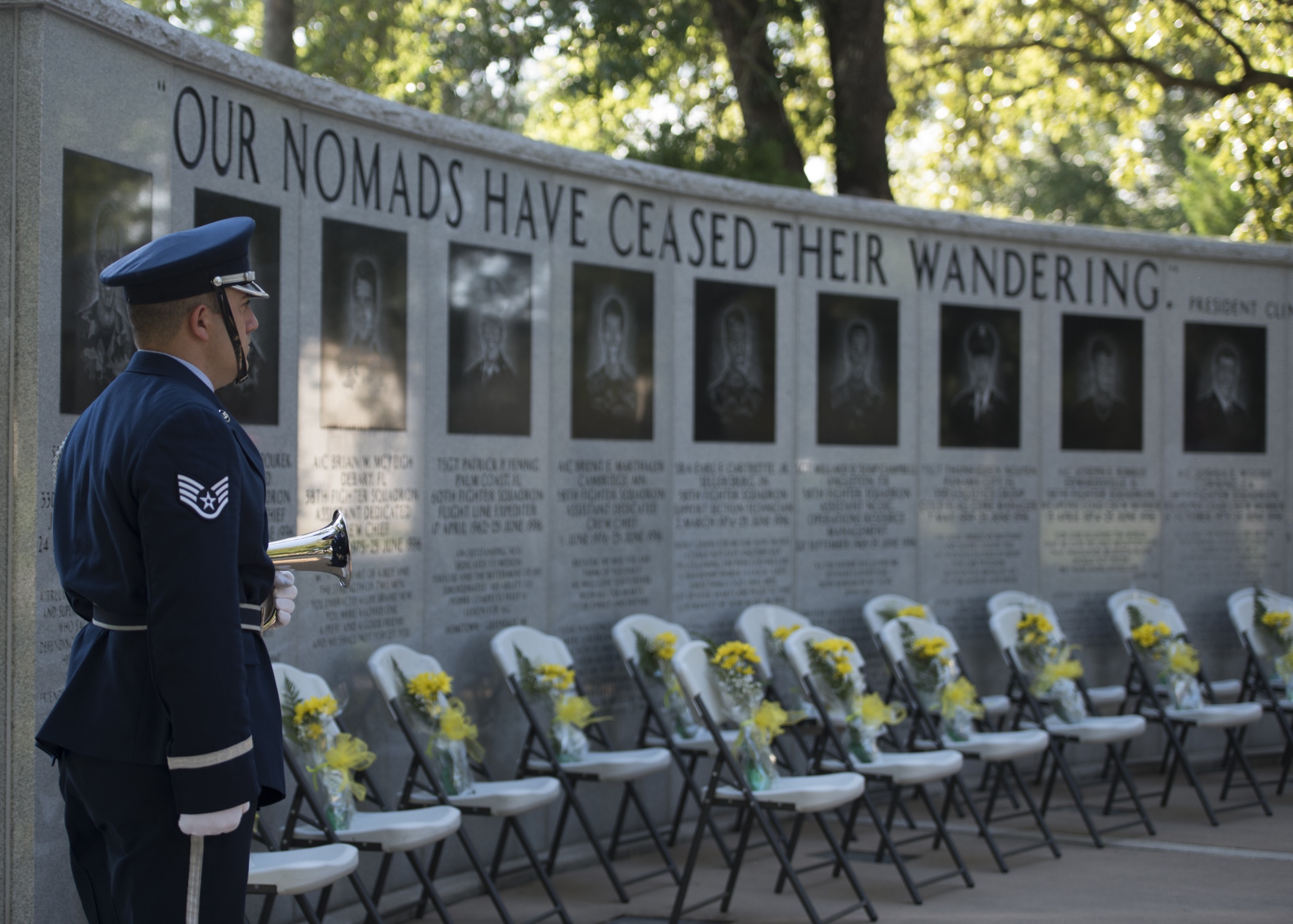
Khobar Towers, a multiple-building complex, was being used as quarters by multinational forces assigned to conduct a no-fly zone operation in southern Iraq, declared after the Gulf War of 1990–91. On June 25, 1996, a truck bomb was detonated near the eight-story Building #131, which housed US Air Force personnel. Nineteen US service members were killed, and several hundred multinational forces were wounded. The bomb was estimated at 5,000 pounds. (The bomb used at Riyadh months earlier was estimated at 200 pounds).
Since the attackers could not enter the compound, they drove to a parking lot adjacent to Building #131. A chain link fence around the compound was about 70 feet from the building. The men parked the bomb truck next to the fence and left in another vehicle. The bomb exploded a few minutes later, at approximately 10:20 p.m. local time. It damaged or destroyed six high-rise apartment buildings in the complex. The blast was so powerful that it was felt 20 miles away.
The previous terrorist incident at Riyadh put the Khobar Towers complex on heightened alert, and suspicious activity near the perimeter fences of Khobar Towers was noted by United States Air Force Security Forces. Also, as noted above, terrorist forces made it known they intended to drive the US forces out of Saudi Arabia. However, the multinational forces were forbidden by the Saudi government to act in any capacity outside the perimeter of the compound, meaning that terrorists could easily carry out surveillance. Much like the attacks of the barracks in Lebanon, security was not adequate to the threat.
Some US officials believe that an Iranian-backed Saudi Hezbollah terrorist group was responsible for the attack, but others believe that bin Laden and al-Qaeda were responsible, especially given that less than a year before he had made it known he wanted all US forces out of Saudi Arabia. There is a school of thought that the Saudi government did not want to admit publicly that there were terrorist forces originating within Saudi Arabia, so they wanted to implicate Iran. Iran, however, has denied any role in the bombing.
The World Trade Center Bombing, New York City, 1993
As a precursor to 9/11, on February 26, 1993, Islamic terrorists exploded a 1,200-pound bomb in an underground parking garage of the World Trade Center with the intent of toppling the North Tower into the South Tower, thereby bringing both buildings down. In a rather simple plot, the terrorists loaded their powerful homemade bomb into a Ford Econoline van they had rented from a Ryder dealership in New Jersey, and then drove across the Hudson River into Manhattan and the World Trade Center’s basement parking garage. They lit four 20-foot fuses, got into a car that had trailed them, and then sped off.
The 110-story buildings, with tens of thousands of workers in each, were not brought down, but six people died and over a thousand were injured. The explosion created a hole 200 feet by 100 feet, several stories deep. An estimated 50,000 people were evacuated, and the buildings were closed for about a month.
There had been some worries about security surrounding the buildings and possible terrorist threats, but little was done. At this time, most people thought such an incident was unimaginable on US soil. However, related plots also were uncovered to blow up the George Washington Bridge, the United Nations headquarters, and other New York City landmarks.
FBI agents arrested Mohammad Salameh, who had rented the van under his own name, then, incredibly, returned to the Ryder dealership to ask for his $400 deposit back. He and his three partners were each sentenced to life behind bars. Ramzi Yousef, who organized the bombing and also was arrested, said during his trial. “I am a terrorist and proud of it.” He also will remain behind bars for the rest of his life.
Eight years later, a much more tragic terrorist incident would occur at the same location, one that would change the course of history. However, many more incidents would occur between the 1993 World Trade Center bombing and 9/11.
The Bombing of the Saudi Military Installation, Riyadh, 1995
Decrying the presence of United States troops in Saudi Arabia, in August 1995 Osama bin Laden wrote an open letter to Saudi leader King Fahd, calling for a guerilla campaign to drive the US forces out of the kingdom. On November 13 of the same year, a truck bomb (maybe two) exploded outside a Saudi Arabian National Guard Center that was being used by American personnel. Five Americans were killed.
Several groups claimed credit for the bombing, but most believed this was the work of bin Laden and al-Qaeda. According to an NBC News website, four Saudi men, all self-described disciples of bin Laden, were executed before the FBI could determine their ties to al-Qaeda.
The Bombing of the USS Cole, Aden, Yemen, 2000
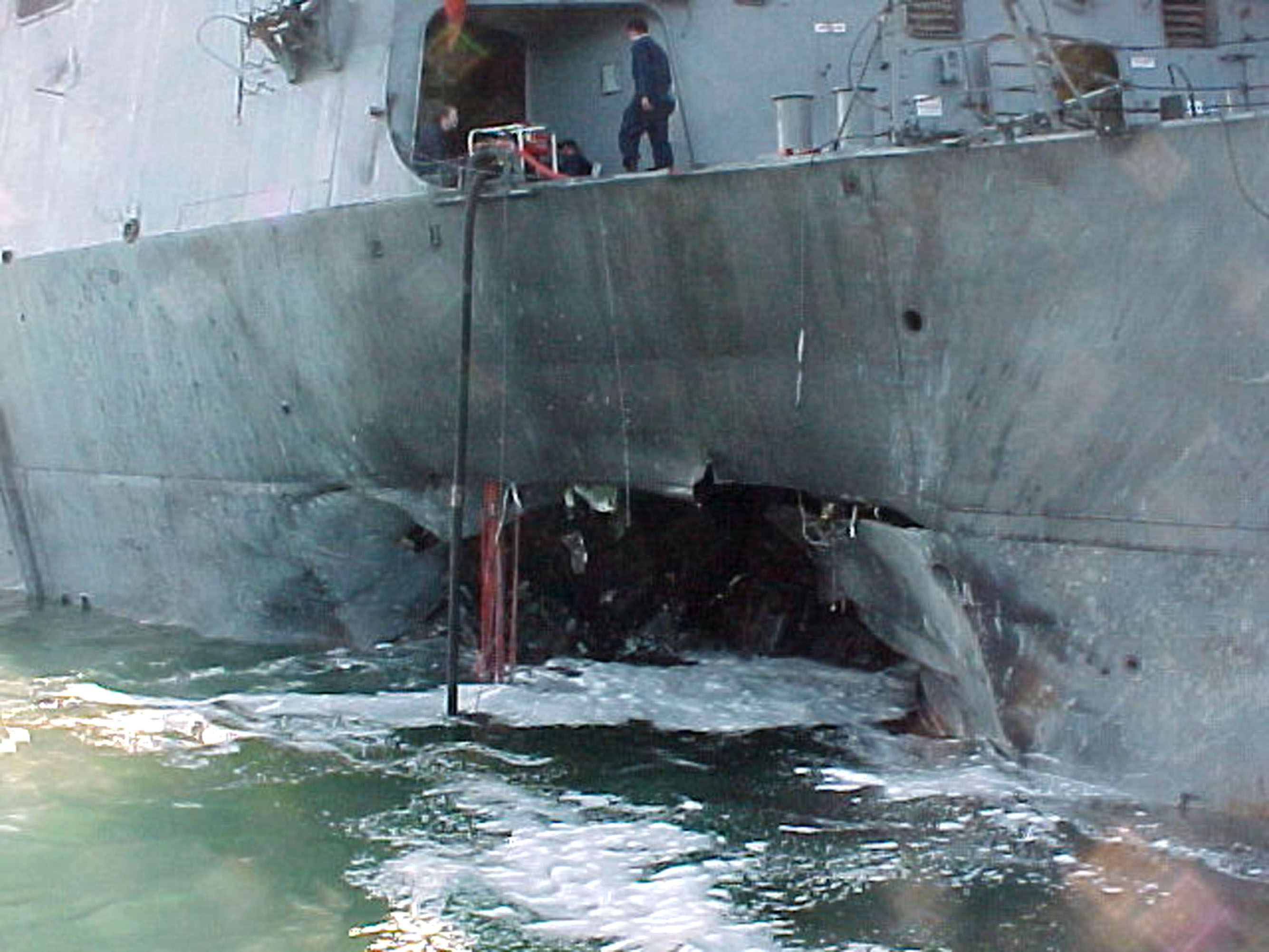
On October 12, 2000, al-Qaeda suicide bombers, using a small boat loaded with explosives, ripped a hole in the hull of the USS Cole while the destroyer was in port for refueling in Aden, Yemen. The ship stopped en route to helping enforce UN sanctions against Iraq. Seventeen US sailors were killed, five of them only 19 years old. Thirty-nine others were injured.
Although American intelligence officials knew of threats in Yemen, there was no specific threat against the Cole. Therefore, no suspicions were raised when the terrorists’ small boat approached along with a group of other ships aiding the Cole in refueling; they reached the ship unchallenged. Accounts of the incident said terrorists stood up in the moment before the blast.
Investigating the bombing of the USS Cole proved to be difficult because of a hostile Yemeni government. Neither the government nor the military was helpful to US officials who investigated in what was still a dangerous area. Years later, the US judicial system also found Sudan liable for the attack, determining that al-Qaeda could not have carried out this attack without help from the Sudanese government.
According to Lawrence Wright in his book Looming Tower, the bombing was a “great victory for bin Laden. Al-Qaeda camps . . . filled with new recruits, and contributors from the Gulf States arrived . . . with petrodollars.”
Ten months earlier, al-Qaeda had attempted to attack the Navy destroyer USS The Sullivans while it was in port at Aden on January 3, 2000. It was a similar plot, but the boat was so heavy with explosives that it sank before reaching its target.
The East Africa Embassy Bombings, 1998
Almost simultaneously on August 7, 1998, truck bombs exploded outside of the US embassies in Nairobi, Kenya and Dar es Salaam, Tanzania. In total, 224 people were killed and over 4,500 wounded, the vast majority of the casualties being natives of the two African countries. Al-Qaeda was responsible.
In Nairobi, 213 people died, including 12 Americans, with several thousand injured. The explosion in Nairobi also collapsed a nearby building that contained a secretarial college, killing most of the students and staff; a third building was severely damaged. The Dar es Salaam attack killed 11 and injured 85. The attacks were conducted on the eighth anniversary of the first deployment of American troops to Saudi Arabia for the Persian Gulf War of 1990–91.
American officials were aware of al-Qaeda operations in the area and knew of a possible embassy attack in Nairobi but did not increase security. The US Ambassador did ask the State Department to move the embassy for security reasons but was denied.
More than 20 people are suspected of being involved in the bombings, including a former US Army Sergeant.
9/11
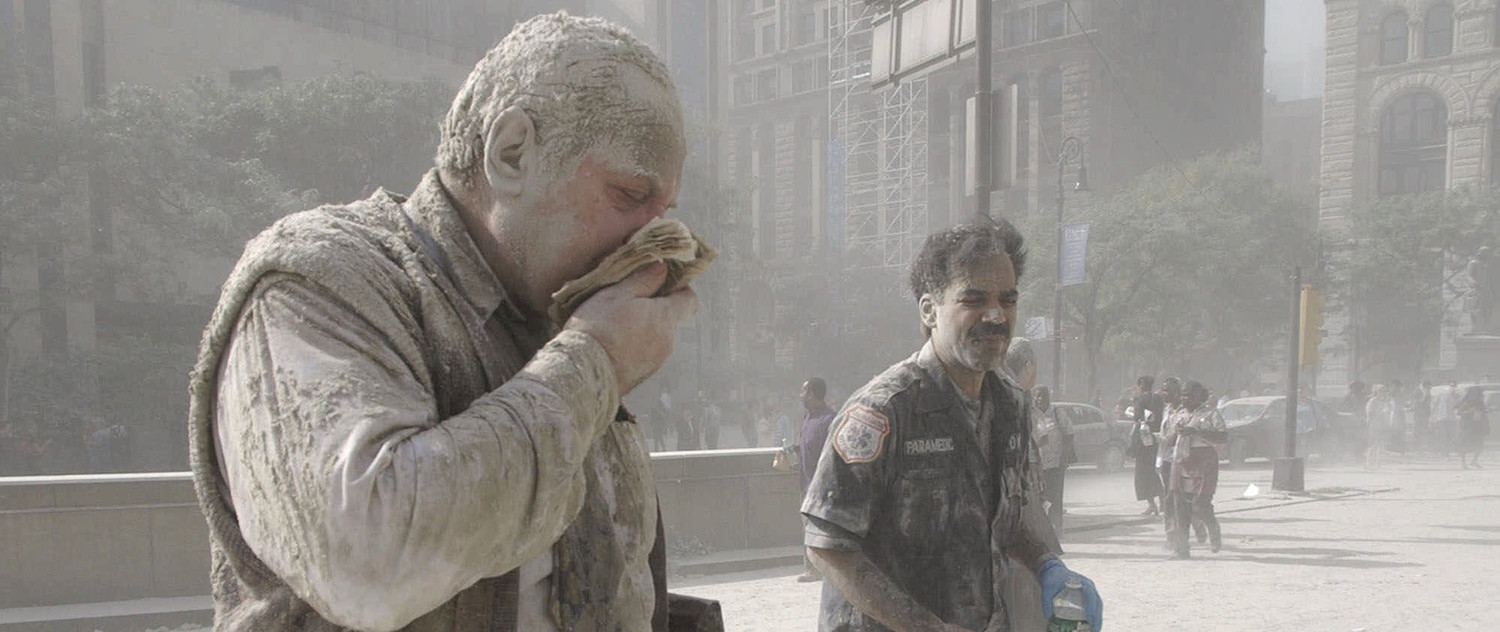
Even after all the terrorist attacks against the United States since the Persian Gulf War of 1990–91, most Americans had never heard of Osama bin Laden or al-Qaeda. That all changed on September 11, 2001.
Early that morning, 19 terrorists hijacked four planes originating from East Coast airports. Three planes conducted suicide attacks against the two large towers of the World Trade Center in New York City and the Pentagon in Washington, DC. The two World Trade Center towers collapsed as a result of the intense heat of the jet fuel. To this day, only 60 percent of the World Trade Center victims have been positively identified. Other nearby buildings suffered damage also, and fires smoldered for several months after the attacks. At the Pentagon, a large hole was blown into the side of the building. These attacks killed about 3,000 people.
This was the equivalent of Pearl Harbor in terms of impact: a direct, devastating attack on the homeland.
There were three major differences, though. First, Pearl Harbor was an attack against military forces; 9/11 was an attack against civilians. Second, the attacker at Pearl Harbor was a country, Japan. The attacker on 9/11, al-Qaeda, was what the military calls a “non-state actor” (not a country). Third, immediate video coverage of the attacks on 9/11 allowed the world to watch the aftermath of the attacks, creating a much more visceral reaction throughout the United States and the world.
The fourth plane was headed toward another high-value target (still unknown) but was brought down by the passengers in a field in Pennsylvania, killing everyone on board. Thanks to the communication technologies of the day, the passengers had realized what was happening. According to History.com: “One of the passengers, Thomas Burnett Jr., told his wife over the phone that ‘I know we’re all going to die. There’s three of us who are going to do something about it. I love you, honey.’ Another passenger, Todd Beamer, was heard saying ‘Are you guys ready? Let’s roll!’ over an open line.” Amazing courage.
All of the flights were picked because they were bound for California, thereby ensuring there was plenty of fuel still on board when the planes reached their targets. Some of the terrorists had lived in the United States for a while and had taken flight lessons for commercial jets, which allowed them to fly the jets once the flight crews had been subdued. Others came to the US just before 9/11 and their task was to commandeer the plane. They easily slipped knives and box-cutters through security.
Osama bin Laden later claimed credit for the attacks. No one disputed that. The main planner of the attack, Khalid Sheikh Mohammed, actually received a degree from an American University in 1986. He also originally focused his efforts on the Soviet Union as a result of the invasion of Afghanistan but, like bin Laden, turned his efforts toward the United States.
The attacks of 9/11 demonstrated to the world that al-Qaeda had global reach. The planning included activities in Malaysia, Germany, and Dubai, as well as flight lessons in the United States, all orchestrated from bin Laden’s headquarters in Afghanistan.
On the evening of September 11, President Bush addressed the nation and talked of American resolve. He also said, “We will make no distinction between the terrorists who committed these acts and those who harbor them.” His actions over the next few years indicated he meant those words.
The Global War on Terrorism/ Overseas Contingency Operations
I will not get bogged down in the nomenclature of this lengthy, continuing operation, as have so many countries, including the United States and Great Britain. Most understand that the War on Terror began in earnest on September 11, 2001. Certainly, as noted above, many actions were initiated as a result of the bombing of the Twin Towers. President Bush, in a televised address to Congress soon after 9/11, made it clear that this conflict would not end until every terrorist group with a global reach was eliminated. At the time, it was not envisioned that the United States military was about to embark on its longest-running conflict in history, assisted by many allies.
The first military action, Enduring Freedom, began on October 7, 2001, less than a month after 9/11, with the attack on Afghanistan. Osama bin Laden and al-Qaeda were using Afghanistan as a safe haven and a base of operations, protected by the Taliban, the brutal ruling political movement that controlled that country. Even though the Taliban were overthrown by December 2001, the United States, more than 15 years later, still has thousands of troops in Afghanistan as a force against the terrorism originating in that country.
Iraqi Freedom, the full-scale invasion of Iraq, began in March 2003, as the United States and allies believed that Saddam Hussein posed an imminent threat. By April, Baghdad was overthrown. However, troops remained in Iraq until the end of 2011. The War on Terror also included operations in the Philippines, North Africa, and other locations.
There were numerous surges, pullbacks, and shifts in priorities. Some allies remained and some left. ISIS/ISIL grew into a well-funded terrorist organization, and although bin Laden was killed in 2011, al-Qaeda still exists. We are still involved in the War on Terror, at a continuing great cost.
More than 6,500 US deaths have occurred as a result of the operations surrounding the War on Terror. The direct operations have cost well in excess of a trillion dollars, and several studies have indicated that other costs associated with the war have cost well over a trillion dollars more. The operations continue in Afghanistan along with the normal, robust military presence in the Middle East ensuring the flow of oil.
The War on Terror may not have begun as a direct result of protecting oil, but its lineage from the Persian Gulf War of 1990–91, the war that was directly about oil, is obvious.
European Attacks
Our allies in Europe also have suffered at the hands of terrorists funded by oil. Some of these incidents have been horrific, and these attacks in European cities involved large numbers of civilian deaths.
France – In 2015-16 there were three high profile terrorist attacks:
- In January 2015, two gunmen who identified themselves as being al-Qaeda killed 17 people and wounded 22 at the offices of the magazine Charlie Hebdo in Paris. A third gunman, identifying with ISIS, conducted two more shootings at a market during the same time frame.
- Later in November 2015, coordinated attacks at multiple venues in Paris killed 130 people and wounded more than 350. Shootings, grenade attacks, and suicide bombings contributed to the chaos, including 90 killed at a rock concert. ISIS claimed responsibility.
- An Islamic truck driver ran over people in Nice on the 2016 Bastille Day (July 14), killing 86 people and injuring more than 400. ISIS claimed responsibility.
There was also a string of stabbings by radical Islamists throughout France in 2016, largely inspired by ISIS.
England – London experienced coordinated suicide bombings on July 7, 2005. Three of them exploded on Underground trains (their subway system) and another exploded on a double-decker bus. Fifty-two people were killed with about 700 injured. A videotape was made by some of the bombers mentioning Osama bin Laden and al-Qaeda; however, authorities could not make that direct connection.
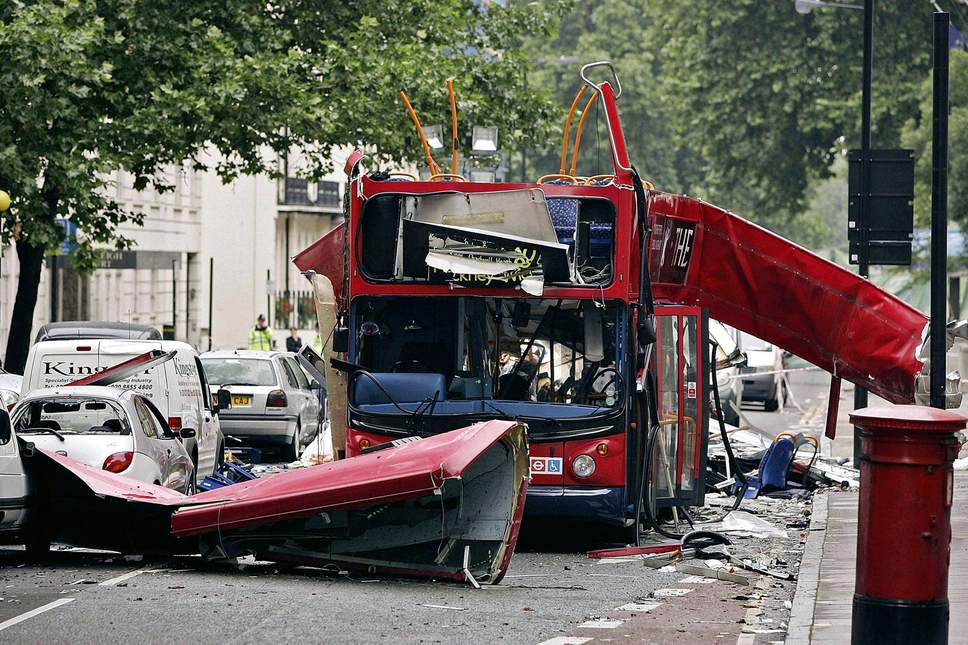
Two weeks later, four more coordinated bombings attacks were averted when all of the detonators failed. Authorities in England have had some success in thwarting attacks, but, understandably, the full extent of their success cannot be made public.
Belgium – On March 22, 2016, Brussels, Belgium experienced three bombs exploding in coordination, two at an airport and the other near the headquarters of the European Union. More than 30 people were killed and over 300 wounded. ISIS took responsibility for the bombings.
The incidents mentioned here are but a small sampling of the total number of terrorist incidents. The vast majority of the attacks either have been attributed to or influenced by al-Qaeda and ISIS. The collective nature of these terrorist incidents has resulted in a staggering loss of life, affecting thousands upon thousands of families, who suffered enormous grief as a result of these horrifying acts. The funding for the organization and execution of these terrorist attacks largely comes from the sale of oil.
Is this worth it when there is now a real solution staring us in the face?

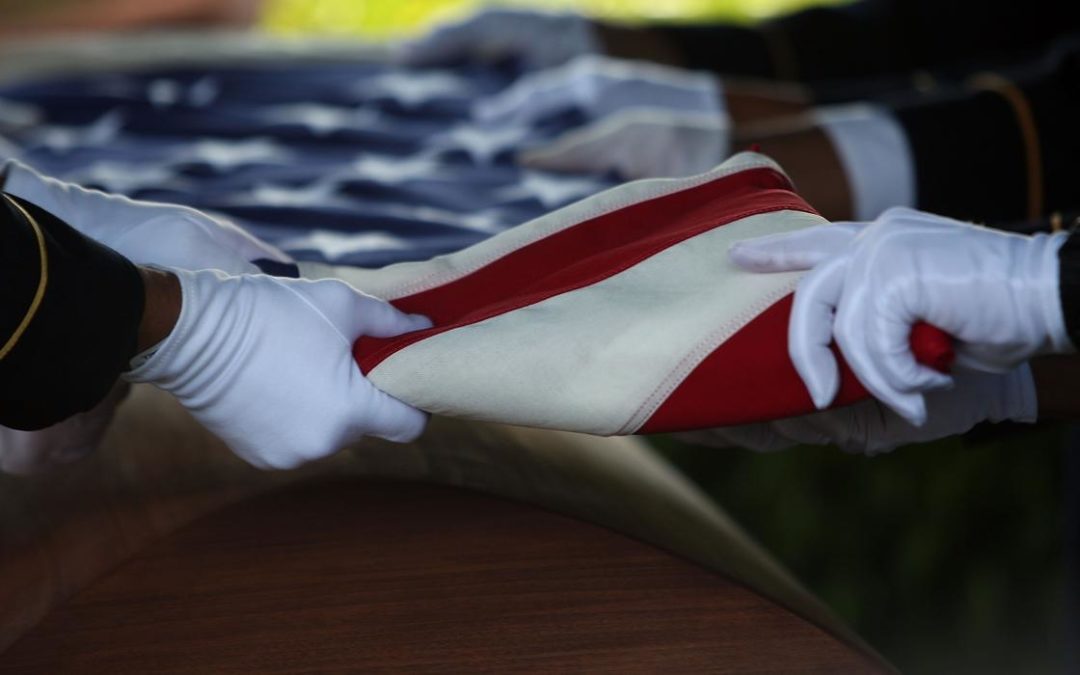
Recent Comments